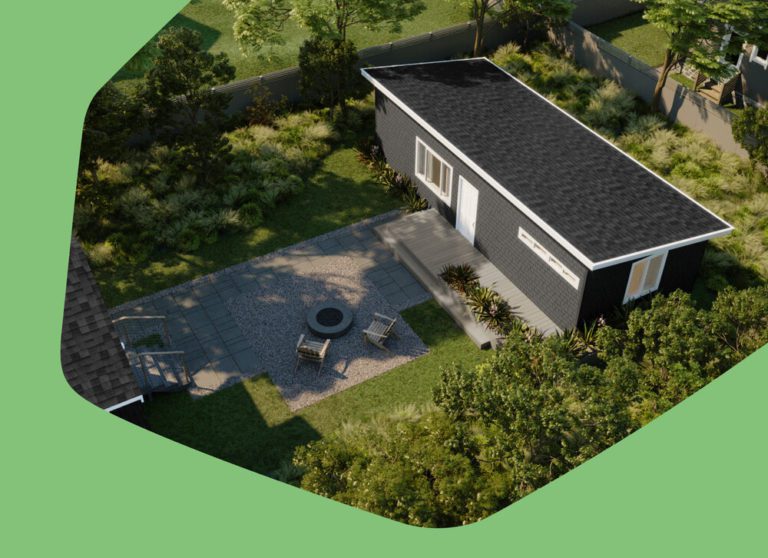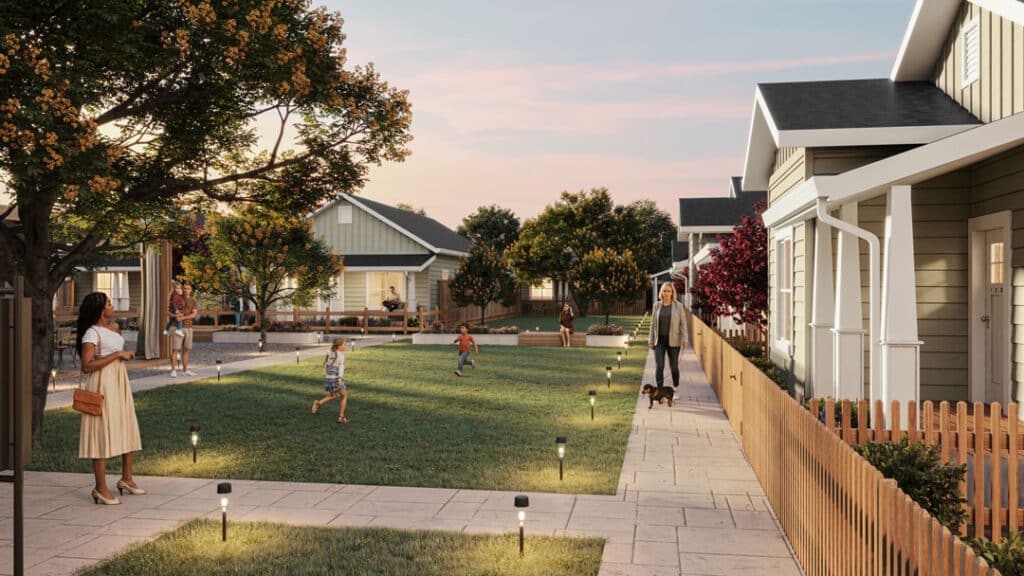- topics | Case Studies, Financing
How to Measure ADU Rental Income Potential

Building an accessory dwelling unit (ADU) to rent out can be a wise move. It lets you earn extra monthly income now while growing in value over time. And recent changes to ADU regulations in California make it easier than ever to build an ADU.
ADU as rental unit: a case study
When you build with Villa, the pricing is all-inclusive and the timeline is predictable, so it’s easy for you to assess your payback period.
Here’s a case study with calculations that focuses on an investor building two 2-bedroom units in Hayward, California. You can swap in your own numbers to measure the rental income potential of any ADU project.
1. Project cost: $400,000
Total price for 2 two-bedroom units, including permits and installation:
2 units @ $200,000 each = $400,000
2. Projected rental income: $55,200/year
Average rental income for two-bedroom home in Hayward: $2,300/month.
2 units x $2,300/ month = $55,200/year
3. Operating expense: $8,200/year
Property tax: About 1.2% of the cost of the ADU project.
1.2% x $400,000 = $4,800
Property insurance for ADU:
$1,000/year increase in premium for dwelling extension coverage.
Or you might have a separate rental dwelling policy. Estimated cost: $300–$600/year for $100,000– $300,000 worth of coverage
Miscellaneous: Landscaping, carpet cleaning, and other services. Estimate: $200/month
4. Gross revenue multiplier (GRM): 7.25
Initial cost divided by gross income: $400,000 ÷ $55,200 = 7.25 GRM
The average GRM in the Bay Area is 15–20, making the ADU an excellent value.
5. Capitalization rate: 12%
Gross income minus operating expense yields net operating income (NOI): $55,200 – $8,200 = $47,000 NOI
NOI divided by total project expense yields cap rate: $47,000 ÷ $400,000 = 11.8% cap rate
For reference, the median cap rate in the Bay Area is 4.6%.
6. Immediate return: $2,610/month
The monthly cash flow is gross monthly income minus all expenses. This investor made a $100,000 down payment and got a 30-year fixed-rate 3.8% mortgage.
Mortgage: $1,400/month
Rental income: $4,600/month
Vacancy (5%) and operating expense: $600/month
$4,600 – $2,083 = $2,517/month; $30,200/year
7. Cash on Cash (CoC)
$30,200 (annual cash flow) ÷ $100,000 (cash down payment) = 30% CoC
For reference, a minimum of 8–12% is considered a worthwhile CoC.
8. Payback period: 8.5 years
$400,000 (project cost) ÷ $47,000 (NOI) = 8.5 years
Thanks to the expedited building timeline for our prefab homes, which are built offsite and installed on your property in just a few weeks, you can start collecting rental income far faster than if you went with stick-build construction. With the weather, noise, and mess to consider, manufactured housing is a less intrusive and more efficient option than traditional custom homes.
Something else to keep in mind: The new owner-occupancy regulations will be up for review in 2025. Consider building now to have your ADU grandfathered into these regulations for the long haul.
The information provided here is not intended to and does not constitute legal advice. The information, content, and materials are provided for general informational purposes only. No reader, user, or browser of this site should act or refrain from acting on the basis of information on this site without first seeking legal advice from counsel in the relevant jurisdiction and should contact their attorney to obtain legal advice. Villa expressly disclaims all claims and liability that may be based upon or related to the information provided herein.



